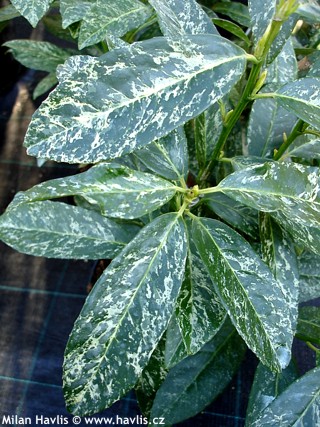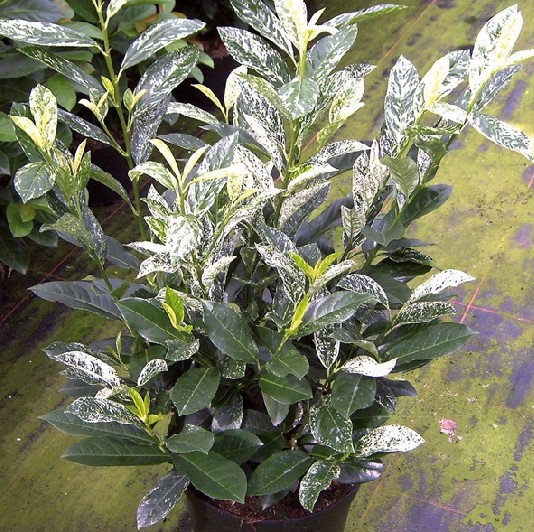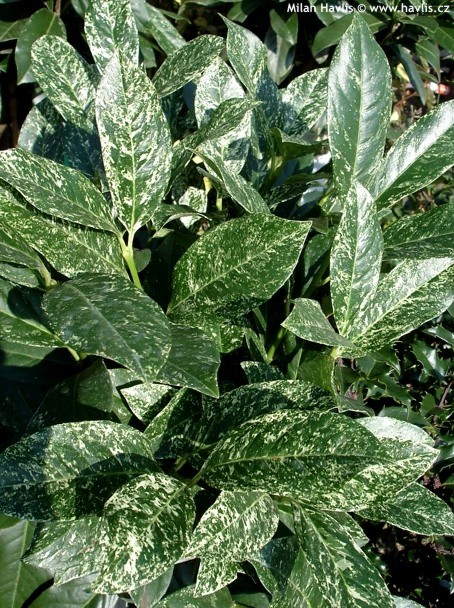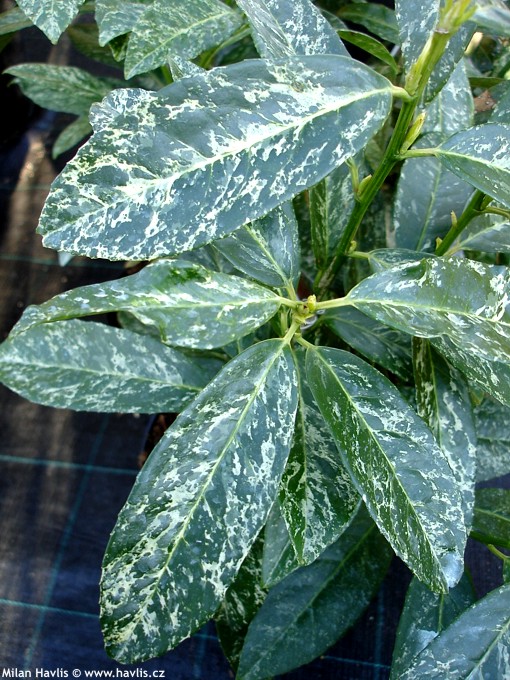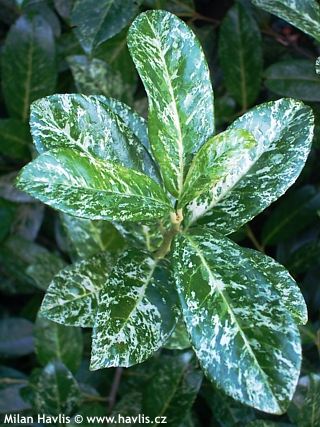Prunus laurocerasus 'IVORY'® Cherry laurel, common laurel, English laurel
Prunus
We are specialists in evergreen plants and we offer the widest possible range of quality plants. English (cherry) laurel is probably the most common and reliable species. This new variety was introduced only in 2006 in the Netherlands.
Ivory is a fantastic new variegated cherry laurel. It was found as a naturally occurring mutation of Caucasica hence its similar features. Evergreen leaves are 10-12 cm long, oval, flat and medium glossy. The base colour is very deep green, splashed with irregular blotches of almost snow white, not yellowish-cream. The varigation resembles aucuba japonica Crotonifolia. The interesting fact is that this varigation is conspicuous on young leaves and is reduced as the leaves mature. The end result is that the shrub has almost green bottom leaves which make a perfect background for fresh and bright whitish ones at the top. The overall effect is, if I may say so, as if a painter splashed a bucket of white paint on top of it. But in a very artistic way!
This variety is a reliable bloomer, too. Compound flowers are white, fragrant and appear in April and May, followed by very ornamental but poisonous fruits. If you want to prune it, do so in early spring after the frost or in mid summer.
Laurels need slightly deep and fertile, acidic, moist soil, and extra watering in frost-free periods in winter to prevent from drying out before the ground gets frozen. It will thrive in full sun or part shade, and will also tolerate being grown in full shade. It seldom suffers from chlorosis (leaves turning yellow owing to lack of iron in the soil) but when it does use a special liquid soil pH balancer to keep it acidic which will help the plant absorb iron. Fully hardy to -27°C (USDA zone 5b).
Last update 01-01-2009.

































